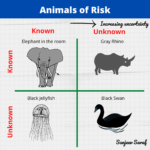The biodiesel and biofuel industry is demonstrating a disturbing trend of unsafe operations. The biodiesel industry is experiencing one fire/explosion incident EVERY two-and-a-half months. Last Friday, there was an explosion at a biodiesel plant in Chicago injuring two workers. The following video from NBC provides details of the incident.
According to the video, the explosion was caused by mixing of glycerin and sulfuric acid. Recognizing incompatibility between chemicals is often not intuitive. For the benefit of the readers of this blog and biodiesel manufactures, below is an incompatibility matrix for commonly used chemicals in biodiesel plants.
Chemical Compatibility Matrix
| Glycerine | Vegetable Oil | Sulfuric Acid | Caustic Soda | Methanol | |
|---|---|---|---|---|---|
| Glycerine | A9,B1,B6,C | B1,B5,C | |||
| Vegetable Oil | B4,B6,C,G | B1,C | |||
| Sulfuric Acid | A9,B1,B6,C | B4,B6,C,G | A6, B1,C,D6 | A9,B1,B6,C | |
| Caustic Soda | B1, B5, C | B1,C | A6,B1,C,D6 | B1,B5, C | |
| Methanol | A9, B1,B6, C | B1,B5, C | |||
| Water | D3, D7, E | D6,D7 | C,D3, D5,D6,D7 |
The above table was created using Chemical Reactivity Worksheet from NOAA.
Reactivity Summary:
A6 – Reaction proceeds with explosive violence and/or forms explosive products;
A9 – Heat generated from chemical reaction may initiate explosion;
B1 – May become highly flammable or may initiate a fire, especially if other combustible materials are present;
B4 – Spontaneous ignition of reactants or products due to reaction heat;
B5 – Combination liberates gaseous products, at least one of which is flammable. May cause pressurization;
B6 – Combination liberates gaseous products, including both flammable and toxic gases. May cause pressurization;
C – Exothermic reaction. May generate heat and/or cause pressurization;
D3 – Combination liberates gaseous products, at least one of which is toxic. May cause pressurization;
D5 – Combination liberates combustion-enhancing gas (e.g., oxygen). May cause pressurization;
D6 – Exothermic, generation of toxic and corrosive fumes;
D7 – Generation of corrosive liquid;
G – Reaction may be intense or violent.





One Response
Yeah I’ve seen this kind of thing before – I suspect that they never did any kind of PSM particularly given that they are so small. In my job, I spent more than 50% of my time on PSM and environmental concerns. This is a major change from when I started over 20 years ago.
I wonder if they have chemical engineers/chemists working in there??